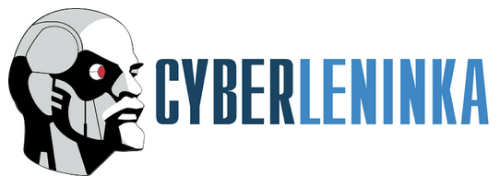Energetics and Elastic Properties of Large Nano-objects: Orbital-free Approach on the Basis of the Density Functional Theory
( Pp. 11-17)
More about authors
Zavodinsky Victor G.
Dr. Sci. (Phys.-Math.), Professor; leader-researcher
Khabarovsk branch at Institute of Applied Mathematics of the Far Eastern branch of the Russian Academy of Sciences
Khabarovsk, Russian Federation Gorkusha Olga A. Cand. Sci. (Phys.-Math.); senior researcher; Khabarovsk branch at Institute of Applied Mathematics of the Far Eastern branch of the Russian Academy of Sciences; Khabarovsk, Russian Federation
Military Academy of Communications named after Marshal of the Soviet Union S.M. Budyonny
St. Petersburg, Russian Federation
Khabarovsk branch at Institute of Applied Mathematics of the Far Eastern branch of the Russian Academy of Sciences
Khabarovsk, Russian Federation Gorkusha Olga A. Cand. Sci. (Phys.-Math.); senior researcher; Khabarovsk branch at Institute of Applied Mathematics of the Far Eastern branch of the Russian Academy of Sciences; Khabarovsk, Russian Federation
Military Academy of Communications named after Marshal of the Soviet Union S.M. Budyonny
St. Petersburg, Russian Federation
Abstract:
Cohesive energy Ecoh and bulk modulus B of large nanosystems Cn, Sin, Aln и Tin, were calculated in the workframe of the all-electron version of the orbital-free approach on the basis of the density functional theory: number of atoms n was varied up to 4096 for carbon and silicon, 23 328 for aluminum, and 2662 for titanium. Nanosystems were taken as fragments of corresponding crystals. It was found that Ecoh and B tend to their values known for bulk materials. Therefore, it was convincingly shown that our orbital-free approach could be used successfully for study mechanical properties of large nanosystems.
How to Cite:
Zavodinsky V.G., Gorkusha O.A., (2021), ENERGETICS AND ELASTIC PROPERTIES OF LARGE NANO-OBJECTS: ORBITAL-FREE APPROACH ON THE BASIS OF THE DENSITY FUNCTIONAL THEORY. Computational Nanotechnology, 2 => 11-17.
Reference list:
Hohenberg H., Kohn W. Inhomogeneous electron gas // Physical Review. 1964. No. 136. Pp. B864-B871.
Perdew J.P., Zunger A.S. Self-interaction correction to density functional approximation for many-electron systems // Physical Review. 1981. No. 23. Pp. 5048-5079.
Ceperley D.M., Alder B.J. Ground state of the electron gas by a stochastic method // Physical Review. 1980. No. 45. Pp. 566-569.
Thomas L.H. The calculation of atomic eld // Proc. Cambr. Phil. Soc. 1927. No. 23. Pp. 542-548.
Fermi E. Un metodo statistic per la determinazione lcune priorieta dell atomo // Rend. Accad. Lincei. 1927. No. 6. Pp. 602-607.
v. Weizsacker C.F. Theorie de Kernmassen // Z. Physik. 1935. No. 96. Pp. 431-458.
Kohn W., Sham J.L. Self-consistent equations including exchange and correlation effects // Phys. Rev. 1965. No. 40. Pp. A1133-A1138.
Gomez S., Gonzalez L.E., Gonzalez D.J. et al. Orbital free ab initio molecular dynamic study of expanded liquid Cs // Non-Cryst. Solids. 1999. No. 250-252. Pp. 163-167.
Wang Y.A., Carter E.A. Orbital-free kinetic-energy density functional theory. In: Theoretical methods in condensed phase chemistry. Schwartz, S.D.: Springer, Dordrecht, 2002. Pp. 117-184.
Huajie Chen, Aihui Zhou. Orbital-free density functional theory for molecular structure calculations // Numerical Mathematics: Theory, Methods and Applications. 2008. No. 1. Pp. 1-28.
Hung L., Carter E.A. Accurate simulations of metals at the mesoscale: Explicit treatment of 1 million atoms with quantum mechanics // Chem. Phys. Lett. 2009. No. 475. Pp. 163-170.
Karasiev V.V., Chakraborty D., Trickey S.B. Progress on new approaches to old ideas: Orbital-free density functionals. In: Many-electron approaches in physics, chemistry and mathematics. Mathematical physics studies. V. Bach, S.L. Delle (eds.). Schwartz, S.D.: Springer, Dordrecht, 2014. Pp. 113-135.
Sarry A.M., Sarry M.F. To the density functional theory // Physics of Solid State. 2012. No. l54 (6). Pp. 1315-1322.
Bobrov V.B., Trigger S.A. The problem of the universal density functional and the density matrix functional theory // J. Exper. Theor. Phys. 2013. No. 116 (4). Pp. 635-640.
Zavodinsky V.G., Gorkusha O.A. On a possibility to develop a full-potential orbital-free modelling approach // Nanosystems: Physics, Chemistry, Mathematics. 2019. No. 9 (4). Pp. 402-409.
Zavodinskiy V.G., Gorkusha O.A. Polnoelektronnyy bezorbital nyy metod modelirovaniya atomnykh sistem: pervyy shag // Computational nanotechnology. 2019. T. 6. № 3. S. 72-76.
Fuchs M., Scheffler M. Ab initio pseudopotentials for electronic structure calculations of poly-atomic systems using density-functional theory // Comp. Phys. Commun. 1999. No. 119. Pp. 67-98.
Houqian Sun, Yun Ren, Zhaofeng Wu, Ning Xu. Density functional calculation of the growth, electronic and bonding properties of titanium clusters Tin (n 2-20) // Computational and Theoretical Chemistry. 2015. No. 1062. Pp. 74-83.
Waschi H.P., Stoll H., Preu H. Ab-initio and PCILO calculations of diamond clusters and the corresponding saturated hydrocarbons // Z. Naturforsch. 1978. No. 83. Pp. 358-365.
Robertson J. Diamond-like amorphous carbon // Materials Science and Engineering R. 2002. No. 37. Pp. 129-281.
Ahlrichs R., Elliott S.D. Clusters of aluminium, a density functional study // Phys. Chem. Chem. Phys. 1999. No. 1. Pp. 13-21.
Kiohara V.O., Carvalho E.F.V., Paschoal C.W.A. et al. DFT and CCSD(T) electronic properties and structures of aluminum clusters: Alnx (n 1-9, x 0, 1) // Chemical Physics Letters. 2013. No. 568-569. Pp. 42-48.
Wei S.H., Zeng Zhi, You J.Q. et al. A density-functional study of small titanium clusters // J. Chem. Phys. 2000. No. 113. Pp. 11127-11133.
Tomanek D.S. Calculation of magic numbers and the stability of small Si clusters // Phys. Rev. Lett. 1986. No. 56 (10). Pp. 1055-1058.
Xiaolei Zhu, Zeng X.C. Structures and stabilities of small silicon clusters: Ab initio molecular-orbital calculations of Si7-Si11 // Journal of Chemical Physics. 2003. Vol. 118. No. 8. Pp. 3558-3570.
Zavodinskiy V.G., CHibisov A.N., Gnidenko A.A., Aleynikova M.A. Teoreticheskoe issledovanie uprugikh svoystv malykh nanochastits s razlichnymi tipami mezhatomnykh svyazey // Mekhanika kompozitsionnykh materialov i konstruktsiy. 2005. T. 11. № 3. S. 337-346.
Vakhrushev A.V., SHushkov A.A. Modelirovanie uprugoy reaktsii nanochastits na silovoe vozdeystvie // Izvestiya Instituta matematiki i informatiki. 2006. № 2 (36). S. 125-128.
Gerard C., Pizzagalli L. Mechanical behavior of nanoparticles: Elasticity and plastic deformation mechanisms // Journal Pramana of Indian Academy of Sciences. Physics. 2015. Vol. 84. No. 6. Pp. 1041-1048.
Nysten B., Fr tigny Ch., Cuenot S. Elastic modulus of nanomaterials: Resonant contact-AFM measurement and reduced-size effect // Proc. SPIE Conf. Vol. 5766: Testing, Reliability, and Application of Micro- and Nano-Material Systems III (SPIE, Bellingham, 2005). R.E. Geer, N. Meyendorf, G.Y. Baaklini, B. Michel (eds.). Pp. 78-88.
Qiong Wu, Wei-shou Miao, Yi-du Zhang et al. Mechanical properties of nanomaterials: A review // Nanotechnol. Rev. 2020. No. 9. Pp. 259-273.
Lunyakov YU.V., Balagan S.A. Modul uprugosti kremnievykh i germanievykh fullerenov Si60 i Ge60 // Fizika tverdogo tela. 2015. T. 57. Vyp. 6. S. 1058-1063.
Magomedov M.N. Zavisimost uprugikh svoystv ot razmera i formy nanokristalov almaza, kremniya i germaniya // ZHurnal tekhnicheskoy fiziki. 2014. T. 84. Vyp. 11. C. 80-90.
Zavodinsky V.G., Kuyanov I.A., Holavkin M.N. Soft elastic behavior of nanometer silicon particles: Computer simulation // Phys. of Low-Dim. Struct. 1999. No. 9/10. Pp. 49-56.
Perdew J.P., Zunger A.S. Self-interaction correction to density functional approximation for many-electron systems // Physical Review. 1981. No. 23. Pp. 5048-5079.
Ceperley D.M., Alder B.J. Ground state of the electron gas by a stochastic method // Physical Review. 1980. No. 45. Pp. 566-569.
Thomas L.H. The calculation of atomic eld // Proc. Cambr. Phil. Soc. 1927. No. 23. Pp. 542-548.
Fermi E. Un metodo statistic per la determinazione lcune priorieta dell atomo // Rend. Accad. Lincei. 1927. No. 6. Pp. 602-607.
v. Weizsacker C.F. Theorie de Kernmassen // Z. Physik. 1935. No. 96. Pp. 431-458.
Kohn W., Sham J.L. Self-consistent equations including exchange and correlation effects // Phys. Rev. 1965. No. 40. Pp. A1133-A1138.
Gomez S., Gonzalez L.E., Gonzalez D.J. et al. Orbital free ab initio molecular dynamic study of expanded liquid Cs // Non-Cryst. Solids. 1999. No. 250-252. Pp. 163-167.
Wang Y.A., Carter E.A. Orbital-free kinetic-energy density functional theory. In: Theoretical methods in condensed phase chemistry. Schwartz, S.D.: Springer, Dordrecht, 2002. Pp. 117-184.
Huajie Chen, Aihui Zhou. Orbital-free density functional theory for molecular structure calculations // Numerical Mathematics: Theory, Methods and Applications. 2008. No. 1. Pp. 1-28.
Hung L., Carter E.A. Accurate simulations of metals at the mesoscale: Explicit treatment of 1 million atoms with quantum mechanics // Chem. Phys. Lett. 2009. No. 475. Pp. 163-170.
Karasiev V.V., Chakraborty D., Trickey S.B. Progress on new approaches to old ideas: Orbital-free density functionals. In: Many-electron approaches in physics, chemistry and mathematics. Mathematical physics studies. V. Bach, S.L. Delle (eds.). Schwartz, S.D.: Springer, Dordrecht, 2014. Pp. 113-135.
Sarry A.M., Sarry M.F. To the density functional theory // Physics of Solid State. 2012. No. l54 (6). Pp. 1315-1322.
Bobrov V.B., Trigger S.A. The problem of the universal density functional and the density matrix functional theory // J. Exper. Theor. Phys. 2013. No. 116 (4). Pp. 635-640.
Zavodinsky V.G., Gorkusha O.A. On a possibility to develop a full-potential orbital-free modelling approach // Nanosystems: Physics, Chemistry, Mathematics. 2019. No. 9 (4). Pp. 402-409.
Zavodinskiy V.G., Gorkusha O.A. Polnoelektronnyy bezorbital nyy metod modelirovaniya atomnykh sistem: pervyy shag // Computational nanotechnology. 2019. T. 6. № 3. S. 72-76.
Fuchs M., Scheffler M. Ab initio pseudopotentials for electronic structure calculations of poly-atomic systems using density-functional theory // Comp. Phys. Commun. 1999. No. 119. Pp. 67-98.
Houqian Sun, Yun Ren, Zhaofeng Wu, Ning Xu. Density functional calculation of the growth, electronic and bonding properties of titanium clusters Tin (n 2-20) // Computational and Theoretical Chemistry. 2015. No. 1062. Pp. 74-83.
Waschi H.P., Stoll H., Preu H. Ab-initio and PCILO calculations of diamond clusters and the corresponding saturated hydrocarbons // Z. Naturforsch. 1978. No. 83. Pp. 358-365.
Robertson J. Diamond-like amorphous carbon // Materials Science and Engineering R. 2002. No. 37. Pp. 129-281.
Ahlrichs R., Elliott S.D. Clusters of aluminium, a density functional study // Phys. Chem. Chem. Phys. 1999. No. 1. Pp. 13-21.
Kiohara V.O., Carvalho E.F.V., Paschoal C.W.A. et al. DFT and CCSD(T) electronic properties and structures of aluminum clusters: Alnx (n 1-9, x 0, 1) // Chemical Physics Letters. 2013. No. 568-569. Pp. 42-48.
Wei S.H., Zeng Zhi, You J.Q. et al. A density-functional study of small titanium clusters // J. Chem. Phys. 2000. No. 113. Pp. 11127-11133.
Tomanek D.S. Calculation of magic numbers and the stability of small Si clusters // Phys. Rev. Lett. 1986. No. 56 (10). Pp. 1055-1058.
Xiaolei Zhu, Zeng X.C. Structures and stabilities of small silicon clusters: Ab initio molecular-orbital calculations of Si7-Si11 // Journal of Chemical Physics. 2003. Vol. 118. No. 8. Pp. 3558-3570.
Zavodinskiy V.G., CHibisov A.N., Gnidenko A.A., Aleynikova M.A. Teoreticheskoe issledovanie uprugikh svoystv malykh nanochastits s razlichnymi tipami mezhatomnykh svyazey // Mekhanika kompozitsionnykh materialov i konstruktsiy. 2005. T. 11. № 3. S. 337-346.
Vakhrushev A.V., SHushkov A.A. Modelirovanie uprugoy reaktsii nanochastits na silovoe vozdeystvie // Izvestiya Instituta matematiki i informatiki. 2006. № 2 (36). S. 125-128.
Gerard C., Pizzagalli L. Mechanical behavior of nanoparticles: Elasticity and plastic deformation mechanisms // Journal Pramana of Indian Academy of Sciences. Physics. 2015. Vol. 84. No. 6. Pp. 1041-1048.
Nysten B., Fr tigny Ch., Cuenot S. Elastic modulus of nanomaterials: Resonant contact-AFM measurement and reduced-size effect // Proc. SPIE Conf. Vol. 5766: Testing, Reliability, and Application of Micro- and Nano-Material Systems III (SPIE, Bellingham, 2005). R.E. Geer, N. Meyendorf, G.Y. Baaklini, B. Michel (eds.). Pp. 78-88.
Qiong Wu, Wei-shou Miao, Yi-du Zhang et al. Mechanical properties of nanomaterials: A review // Nanotechnol. Rev. 2020. No. 9. Pp. 259-273.
Lunyakov YU.V., Balagan S.A. Modul uprugosti kremnievykh i germanievykh fullerenov Si60 i Ge60 // Fizika tverdogo tela. 2015. T. 57. Vyp. 6. S. 1058-1063.
Magomedov M.N. Zavisimost uprugikh svoystv ot razmera i formy nanokristalov almaza, kremniya i germaniya // ZHurnal tekhnicheskoy fiziki. 2014. T. 84. Vyp. 11. C. 80-90.
Zavodinsky V.G., Kuyanov I.A., Holavkin M.N. Soft elastic behavior of nanometer silicon particles: Computer simulation // Phys. of Low-Dim. Struct. 1999. No. 9/10. Pp. 49-56.
Keywords:
orbital-free approach, all-electron potential, density functional theory, modeling, nanomaterials.
Related Articles

1. NANOSTRUCTURED MATERIALS Pages: 6-10 Issue №5291
DISLOCATIONS INFLUENCE ON DURABILITY OF NANOSYSTEMS: AN ATOMIC SCALE SIMULATION
modeling
nanosystems
deployment
silicon
magnesium
Show more
Socio-economic Research Pages: 77-82 DOI: 10.33693/2223-0092-2022-12-6-77-82 Issue №22403
Modeling of a System for Assessing the Sustainability of Regional Development, Taking Into Account the Conditions for the Effective Implementation of Public Administration Regulations and the Functioning of Scientific Institutions
sustainable development
assessment system
regional development
modeling
public administration regulations
Show more
14. DIFFERENT Pages: 268-272 Issue №16787
Ontology and graph databases
ontology
graph databases
knowledge bases
modeling
Show more
14. INNOVATION AND INVESTMENT MANAGEMENT Pages: 157-162 Issue №5518
THE ROLE OF MODELING IN THE MANAGEMENT OF COMPETITIVE AND SUSTAINABLE DEVELOPMENT OF INNOVATIVE BUSINESS STRUCTURES
modeling
management
competitiveness
the development of a competitive
sustainable development
Show more
REGIONAL AND SECTORAL ECONOMICS Pages: 260-265 Issue №24576
Application of a Nonparametric Method for Assessing the Cointegration of the Indices of Change in Capital Rate, Return on Assets and Labor Productivity
cointegration
modeling
non-parametric method
labor productivity
capital-labor ratio
Show more
6. Criminology Pages: 183-186 Issue №3132
Planning and modeling of measures to combat organized crime: features methodologies and perspectives
planning against crime
modeling
methodology
a systematic approach
quantitative and qualitative characteristics
Show more
5. Criminal; Criminal enforcement law Pages: 101-109 Issue №4748
Methodological approaches to the construction of the criminal law and criminological models of organized crime
criminal policy
organized crime
modeling
the programme of the fight against crime
crime statistics
Show more
5. MATHEMATICAL AND INSTRUMENTAL METHODS OF ECONOMICS Pages: 148-153 Issue №18204
Development of the indicative system for assessing the «happiness» level using global indexes, including human capital
Happiness Index
regression analysis
correlation
modeling
forecasting
Show more
Nanotechnology and Nanomaterials Pages: 193-213 DOI: 10.33693/2313-223X-2024-11-1-193-213 Issue №95355
Pulse Tunnel Effect: Fundamentals and Prospects for Application
pulsed tunneling effect
coherent radiation
functional materials
superconductivity
nanomaterials
Show more
MATERIALS SCIENCE AND MATERIALS TECHNOLOGY Pages: 146-150 Issue №11955
MECHANICAL PROPERTIES OF NANOSCALE COATINGS ON THE BASE OF TI, TIN И ZRN
the young's modulus
the shear modulus
modeling
tensile surface
cracked
Show more










